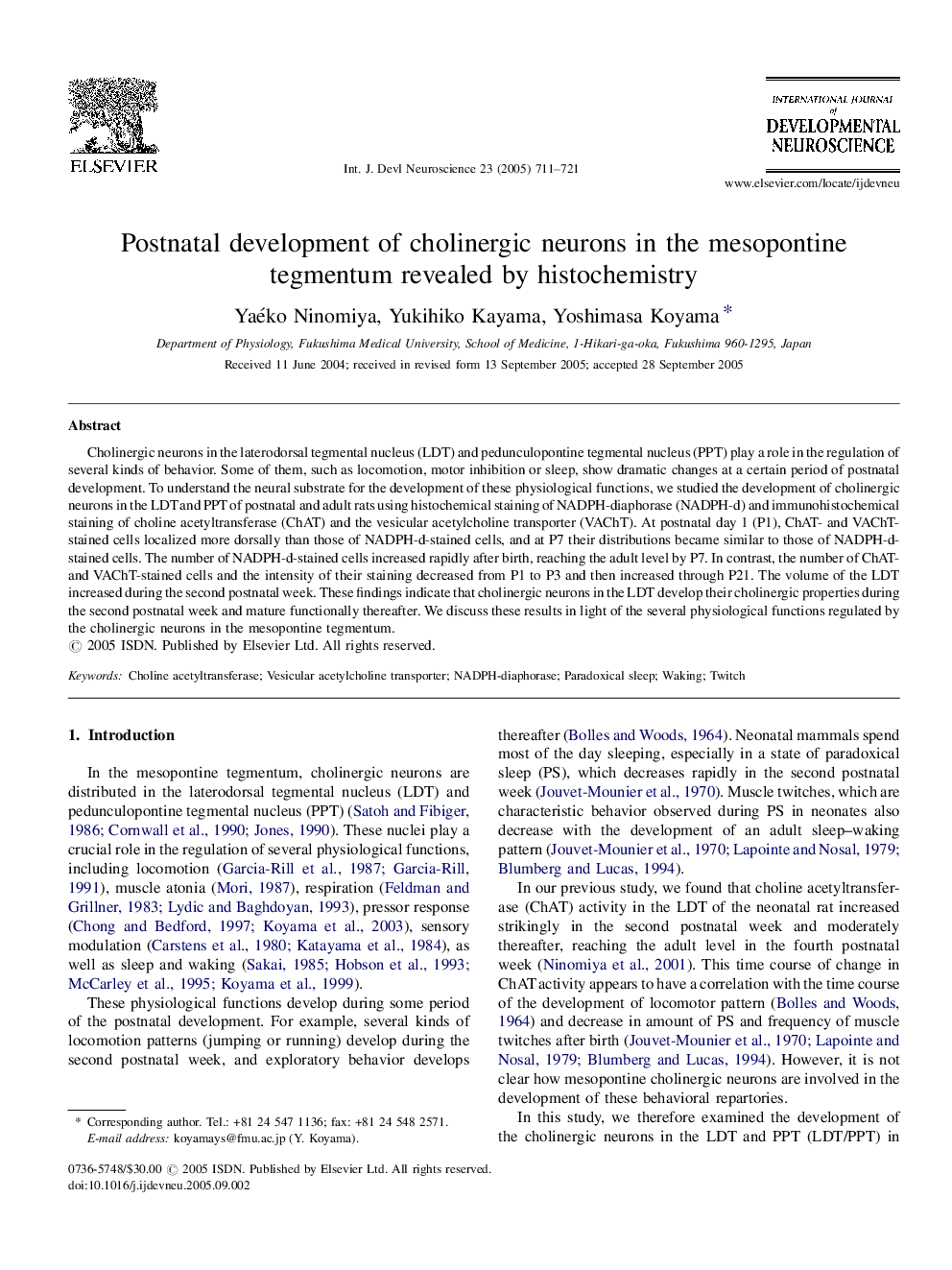| Article ID | Journal | Published Year | Pages | File Type |
|---|---|---|---|---|
| 9933548 | International Journal of Developmental Neuroscience | 2005 | 11 Pages |
Abstract
Cholinergic neurons in the laterodorsal tegmental nucleus (LDT) and pedunculopontine tegmental nucleus (PPT) play a role in the regulation of several kinds of behavior. Some of them, such as locomotion, motor inhibition or sleep, show dramatic changes at a certain period of postnatal development. To understand the neural substrate for the development of these physiological functions, we studied the development of cholinergic neurons in the LDT and PPT of postnatal and adult rats using histochemical staining of NADPH-diaphorase (NADPH-d) and immunohistochemical staining of choline acetyltransferase (ChAT) and the vesicular acetylcholine transporter (VAChT). At postnatal day 1 (P1), ChAT- and VAChT-stained cells localized more dorsally than those of NADPH-d-stained cells, and at P7 their distributions became similar to those of NADPH-d-stained cells. The number of NADPH-d-stained cells increased rapidly after birth, reaching the adult level by P7. In contrast, the number of ChAT- and VAChT-stained cells and the intensity of their staining decreased from P1 to P3 and then increased through P21. The volume of the LDT increased during the second postnatal week. These findings indicate that cholinergic neurons in the LDT develop their cholinergic properties during the second postnatal week and mature functionally thereafter. We discuss these results in light of the several physiological functions regulated by the cholinergic neurons in the mesopontine tegmentum.
Keywords
Related Topics
Life Sciences
Biochemistry, Genetics and Molecular Biology
Developmental Biology
Authors
Yaéko Ninomiya, Yukihiko Kayama, Yoshimasa Koyama,
